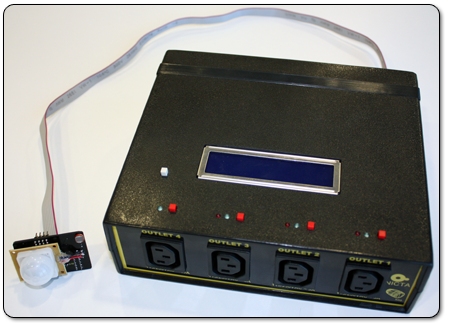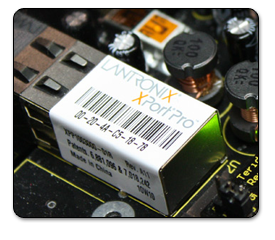e4Meter

The e4Meter and prototype sensor board.
The e4Meter is a prototype power meter that was built for the 2010 Lantronix XPort Pro design competition.
The idea
There exists a void in the market for an intelligent power management device. Our idea was to combine functionality of several common devices:
- distribution strip
- power meter/monitor
- device controller
The e4Meter has four individually controlled and metered outlets allowing four devices or groups of devices to be monitored and controlled intelligently by detecting changes in environmental conditions. The sensorboard prototype (as seen beside the e4Meter in the right photo) has motion, light and temperature sensors and communicates with the e4Meter.
The competition
Lantronix is a US based network technology company. Every year, they host a design competition based around one of their products. For 2010, the product was the XPort Pro, a small ethernet->serial device with a built in Coldfire microprocessor running uClinux.
The XPort Pro provides a web interface through which the outlets can be monitored and controlled. Alternatively, there is a serial console which can be used to request data.

The power measurement is left to a small embedded SoC manufactured by Maxim (previously Teridian), the 78M6618. An 8051 microprocessor handles the hardware interface (LCD, buttons, etc) and a specialised compute-engine (CE) handles the ADC measurements and integration.

The LCD
The LCD screen provides a simple interface to allow immediate observation. Initially, power consumption (in Watts) is shown, pressing the white button cycles the display between current (in Amps), RMS voltage and the current sensor readings, then back to power consumption. The LCD backlight is on a ten second timer during which the display can be cycled.
The web interface
Running on the XPort Pro is a web interface written with Google Web Toolkit. The dashboard page (shown below) gives an overview of the current state of the outlets and their current power consumption as well as a graph of the last five minutes.
Historical information for each outlet can be seen on their individual pages, allowing the past day, month or year to be seen. Furthermore, each graph can be interactively zoomed to focus on a certain point in time.
The web interface is dynamically updated every second using asynchronous javascript (AJAX) and therefore seems to act as a very snappy user interface.
The video
For the Lantronix competition, NICTA's communications team worked with us to develop a technical video for the judges which is available below:
Publications

|
 
|
Etienne Le Sueur and Bernard Blackham e4meter: Power management for the people Linux.conf.au, Brisbane, Australia, January, 2011 |
Other images

The web interface dashboard.
